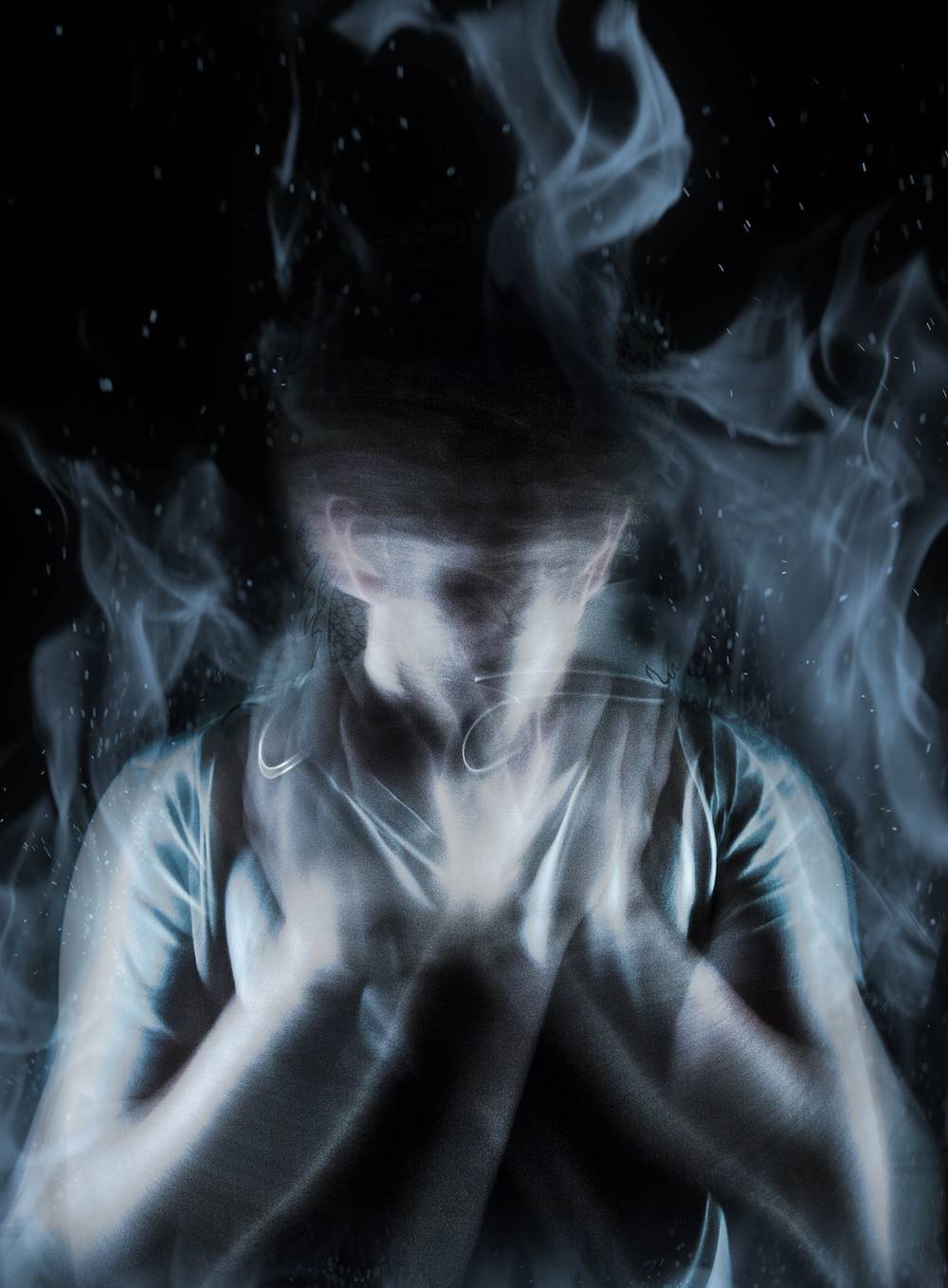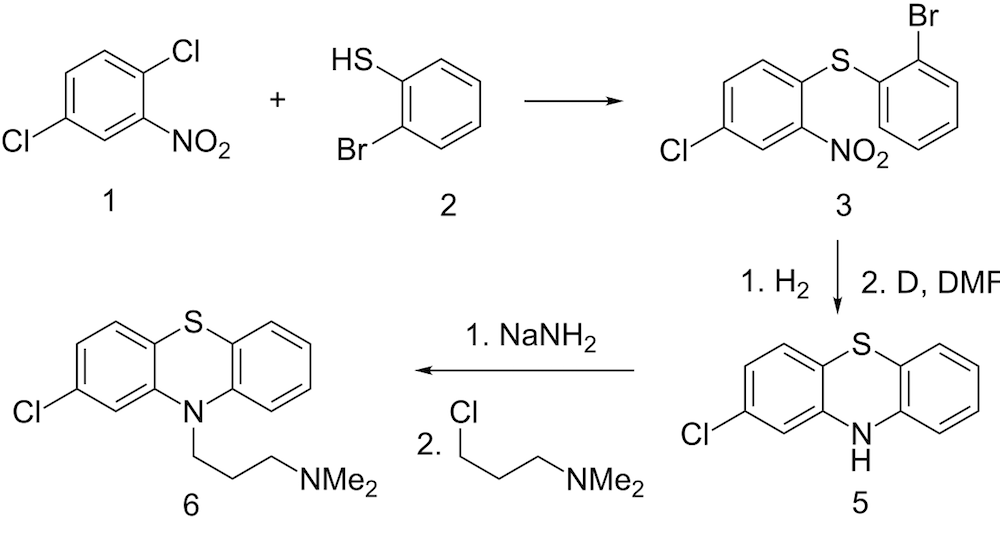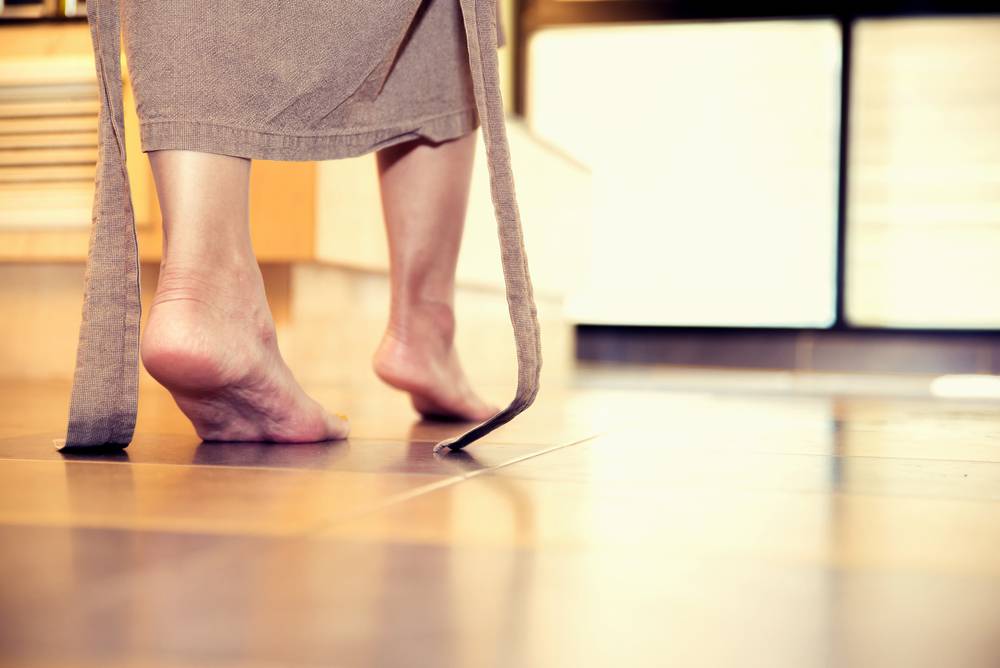Akathisia is not well understood. It’s a tortuous condition where the sufferer feels an incredible, irresistible restlessness. The feeling creates constant, repetitive movements like pacing, rocking back and forth, or swaying.
Caused by antipsychotic or antidepressant drugs, the treatment for akathisia normally starts with stopping the medication. Tardive akathisia can start several months after beginning medication.
Since the prognosis can include suicidal ideation, it’s very important that anyone with symptoms of akathisia be treated right away.
1. Akathisia Definition
Definition: Akathisia is a side effect of certain drugs based on an urgent feeling of physical restlessness. It permeates every aspect of the victim’s life.
The medical definition of akathisia comprises continual, repetitive rocking motions, crossing and recrossing the legs, fidgeting, and/or marching in place.
Akathisia is most common with older, first generation, high-potency antipsychotic drugs. However, it can also occur with newer antipsychotics and other drugs.
The most common treatment for drug-induced akathisia is to switch to a drug with less akathisia risk. In some cases a lower dose of the same drug may also be effective.
2. Akathisia Symptoms
The Symptoms of Akathisia generally center around repetitive, involuntary movements. In fact the root of the word means “not to sit.”
Akathisia sufferers feel a compulsive need to move. To relieve it, they perform repetitive motions, such as:
- rocking back and forth or swaying
- Marching in place
- Shifting weight from one foot to the other
- Pacing
- Inability to stand still
- Continually crossing and recrossing the legs while sitting, or swinging one leg.
Less visible symptoms can include:
- A sense of extreme, irresistible restlessness
- Irritability
- Panic
- Tension
- Agitation
- Anxiety
- Emotional unease
- Insomnia
- Dark, unpleasant thoughts
- Impatience
Akathisia can also sometimes lead to violent, aggressive impulses or suicide. Sufferers often can’t pinpoint the source of their distress, though it can feel unbearable.

3. Causes
The main culprit in cases of akathisia is older antipsychotic drugs, though antidepressants are also implicated.
- The biggest cause of akathisia is high-strength, first-generation antipsychotic medications. Patients taking these drugs see high rates of the symptom, at around 50% to 80%, depending on dosage. It’s thought that decreased dopamine from these medications causes akathisia.
- The next biggest at-risk group for the condition is patients taking neuroleptic drugs. These are more modern antipsychotics like Abilify, Clozaril, Seroquel, or Geodon. People taking these medications have a 30% to 40% chance of akathisia.
- Antidepressants classified as SNRIs, SSRIs, and tricyclics can causse akathisia. These include Paxil, Prozac, Zoloft, and Celexa. It’s thought that increased serotonin from these drugs plays a part in causing the condition. Patients taking these drugs have a 20% chance of suffering from akathisia symptoms.
- Drug withdrawal from illegal drugs can also cause akathisia. This includes withdrawal from opioids, cocaine, barbiturates, or benzodiazepine. Withdrawal-caused akathisia generally appears a few weeks after stoppage.
- Anti-nausea and anti-migraine drugs can cause akathisia in rare cases. With these drugs, symptoms of the condition can show up months after treatment starts.
- Certain diseases and conditions can cause akathisia, including Parkinson’s disease, traumatic brain injury, and encephalitis.
4. List of Drugs that May Cause Akathisia
A number of antipsychotics and antidepressants may cause akathisia. See the partial list below.
First Generation Antipsychotics
- chlorpromazine (Thorazine)
- haloperidol (Haldol)
- flupenthixol (Fluanxol)
- loxapine (Loxitane)
- fluphenazine (Prolixin)
- perphenazine (Trilafon)
- Lurasidone (Latuda)
- molindone (Moban)
- prochlorperazine (Compro, Compazine)
- pimozide (Orap)
- thiothixene (Navane)
- thioridazine (Mellaril)
- trifluoperazine (Stelazine)
Neuroleptics
- Abilify (aripiprazole)
- Geodon (ziprasidone)
- Clozaril (clozapine)
- Seroquel (quetiapine)
- Risperdal (risperidone)
- Zyprexa (olanzapine)
Antidepressants
- Citalopram (Celexa)
- Paroxetine (Paxil, Seroxat)
- Escitalopram (Lexapro, Cipralex)
- Fluvoxamine (Luvox)
- Fluoxetine (Prozac)
- Desvenlafaxine (Pristiq)
- Sertraline (Zoloft, Lustral)
- Levomilnacipran (Fetzima)
- Duloxetine (Cymbalta)
- Tofenacin (Elamol, Tofacine)
- Milnacipran (Ixel, Savella)
- Venlafaxine (Effexor)
5. Diagnosis
Diagnosing someone with akathisia consists mainly of identifying the symptoms above, then ruling out similar conditions.
The doctor will ask the patient about symptoms. She’ll also look for the symptoms during the exam, such as:
- Repetitively recrossing legs
- Fidgeting
- Tapping feet
- Changing positions continuously
- Shuffling legs while walking
- Rocking back and forth
Certain tests can rule out conditions similar to akathisia, such as:
- Tardive Dyskinesia
- Anxiety
- Restless Leg Syndrome
- Mood disorders
- Drug withdrawal
6. Akathisia Almost Always Goes Away
Akathisia is such a tortuous condition that sufferers often panic, thinking it will never go away. Symptoms of the disease itself can magnify this fear.
Thankfully, almost all akathisia from Abilify and other drugs does go away once the medication is stopped. In some cases it does take a week or two for symptoms to reside, but the condition isn’t permanent.
Since akathisia is dose dependent with medications like Abilify, even a reduced dose can make the symptoms go away.
In some cases, akathisia can actually arise from Abilify withdrawal. In other words, the patient was healthy until Abilify was stopped.
Acute, Chronic, and tardive akathisia all go away with time, whether caused by Latuda, Abilify, or another drug. However, the symptoms usually don’t subside until a week or so after stopping medication.
In some rare cases, akathisia can persist even after medication has stopped.
7. It’s Very Common
Akathisia is a surprisingly common side effect of antipsychotic drugs. Akathisia symptoms appear in:
- 20% of patients on antidepressants.
- 30%-40% of patients on neuroleptics (newer antipsychotics).
- 50% to 80% of patients taking first generation antipsychotic drugs, depending on dosage.
With antidepressants, it’s most often seen in tricyclics, SNRIs, and SSRIs (sertonin reuptake inhibitors).
In one case in 2014, an 81 year-old patient on an SSRI experienced severe akathisia Six days after discontinuing the medication, symptoms subsided.
In another case in 2010, a 52 year-old patient taking an SSRI began suffering from akathisia within two days of taking his first dose. Two days after starting on diazepam treatment, his akathisia resolved. It did not return after stopping diazepam one week later.

8. Prognosis for Akathisia Sufferers
The good news about akathisia is that once the patient stops taking the medication, the symptoms usually go away within a week. The prognosis for tardive akathisia is very good. That said, some people may experience mild symptoms even after stopping the drug.
The bad news is that when it’s left untreated, akathisia can worsen psychotic or depressive behavior. It can also prevent patients from taking needed medication.
Further, akathisia can cause suicidal ideation or bouts of violent behavior. It can also raise the risk of tardive dyskinesia.
For all these reasons, it’s important to monitor patients on antipsychotics and antidepressants for signs and symptoms of akathisia. If symptoms occur, rapid treatment is crucial.
9. Akathisia Treatments
Treatment of akathisia is usually fairly simple and primarily involves stopping the medication that caused the symptoms.
Normally, the condition will resolve within a week or so after stopping the drug. A replacement drug with less risk of causing akathisia can be used instead.
If no alternative medication can be found, a lower dose of the same medication may stop tardive akathisia. Once the symptoms subside, the dosage can often be increased without rekindling the problem.
Finally, other medications can be used as treatment for akathisia, including:
- Blood pressure medications
- Antiviral drugs
- Anticholinergic drugs such as Cogentin
- Beta-adrenergic antagonists like Clonidine or Propranolol.
- Benzodiazepines (tranquilizers)
There are reports of natural treatments for akathisia, such as herbal treatments or Vitamin B-6. While some studies do show the effectiveness of high doses of B-6, it’s generally best to follow a doctor’s advice.
Newer Treatments for Akathisia
There’s some evidence that newer treatments for akathisia, including ritanserin, trazodone, and cyproheptadine, are effective when traditional means fail.
10. There Are Four Types of Akathisia
There are three types of akathisia. They all have the same symptoms and causes. The only difference is when they show up. Their medical definitions are below.
- Acute akathisia is defined as akathisia that develops shortly after use of the antipsychotic begins. It can show up in a few hours and last for six months.
- Tardive akathisia is akathisia that develops in a few months or years after the patient starts taking the drug. Tardive means, literally, “something that appears late.” (Think, “tardy.”)
- Chronic akathisia is any akathisia that lasts more than six months.
- Withdrawal akathisia comes about because of withdrawal from illegal drugs like cocaine or opiates, or as a side effect of withdrawal from some prescription antipsychotics or antidepressants.
11. Often Confused with Tardive Dyskinesia
Akathisia is often confused with a similar condition called tardive dyskinesia. Both involve repetitive, purposeless movements. Both are side effects of taking neuroaffective drugs.
Both show up after months or years of prescription drug use. Both usually improve when the drug is stopped. However, there are important differences.
First, akathisia mainly involves the legs and/or trunk. Dyskinesia often also affects the face and arms.
Second, dyskinesia patients don’t realize they’re moving. Akathisia patients do.
Both also sound similar, because both contain the term, tardive, which means, “to show up late.”
Akathisia, dyskinesia, parkinsonism, and tardive dystonia are all conditions called extrapyramidal syndromes (EPS). They all have similarities and can appear together in the same patient, though they have different definitions.
Akathisia can be masked by akinesia, a reduction in movement most often seen in Parkinson’s patients but sometimes caused by neuroaffective drugs.
12. Pronunciation and Spelling
Akathisia is pronounced ak-uh-thiz-ee-uh.
There are no real synonyms, though akathisia is often used interchangeably with hyperkinesis, antsiness, and akathisic movement.
It’s often misspelled as akathesia. It’s pronunciation can be confused with akinesia, a related condition with a similar spelling.
For a more concrete pronunciation guide, see the video below.
https://youtu.be/S8dVjzDda1c?t=6s
13. What to Watch For
Friends and family members of patients on antipsychotics or antidepressants should watch for akathisia symptoms.
That’s because the condition affects 30% to 40% of patients on neuroleptics. It affects a much higher 50% to 80% of those on older, high-strength antipsychotics, and 20% of patients on antidepressants.
Since the key symptom of restlessness may be invisible, close personal relations should watch for:
- A preoccupied appearance
- Obvious tension
- Quick-temperedness
- Clear emotional distress
Those symptoms could cover a wide range of other conditions, so it’s important to ask, “Did the akathisia symptoms show up only after starting the medication?”
Another question for friends and family is, “Did the akathisia symptoms get worse after starting medication?”
An alert family member can literally save a life.
14. Benadryl and Akathisia
Benadryl can cause Akathisia in extremely rare cases. Of the nearly 45,000 people who have experienced side effects from Benadryl, about one tenth of one percent experienced akathisia.
Most of those patients had bipolar disorder and were also taking Ativan. As such, anyone worried that Benadryl has caused their akathisia could try stopping Benadryl for a few weeks. That said, it’s very unlikely Benadryl will actually cause the condition.
In some cases, Benadryl (diphenhydramine) can actually work as a treatment for akathisia. That said, studies that have shown its effectiveness against the condition were conducted with intravenous delivery.
Find Out How Much You Can Save Instantly.
Try our on-line savings calculator.
15. Akathisia vs Restless Leg Syndrome
Akathisia and Restless Legs Syndrome (RLS) share many of the same symptoms. While they’re considered to be very different conditions, there’s evidence they’re both caused by similar mechanisms.
Both Restless Legs Syndrome and akathisia involve increased serotonin transmission. They’re also both related to dopamine deficiency. Further, medications that cause akathisia as a symptom can also cause RLS.
Akathisia Videos
There are several good videos that describe the agony of akathisia. The video below provides an excellent educational explanation of the symptoms and suicidal ideation of akathisia.
The video doesn’t offer any treatment ideas, but intends to spread awareness of the possibly fatal condition.
The next video shows an akathisia sufferer named Josh. Josh is obviously in continual torment, constantly moving and shifting from foot to foot.
In Josh’s case, akathisia eventually led to dystonia as well. Josh explains the definition of akathisia, then explains that it feels like a constant, immediate adrenaline rush.
The next video is very short and shows an akathisia sufferer who constantly paces the floor when standing and drums on his knees when sitting.
In this case, the patient paces over 16 hours per day. He only sleeps when completely exhausted from 16 hours of pacing. The sufferer’s wife claims that he took an antidepressant nearly a year earlier, but his symptoms haven’t subsided.
Conclusion
Akathisia is a misunderstood, somewhat mysterious side effect of antipsychotic drugs and, to a lesser extent, antidepressants. It involves compulsive, involuntary, repetitive movements brought on by a feeling of urgent restlessness.
The symptoms of akathisia almost always resolve very quickly after the cause is removed (in this case that means stopping medication). For this reason, treatment normally takes shape as stopping or changing medications, though there are additional medications used to treat the condition.
Find Out How Much You Can Save Instantly.
Try our on-line savings calculator.
References
- Akathisia: Overlooked at a Cost – NIH
- The epidemiology of drug-induced akathisia: Part II. Chronic, tardive, and withdrawal akathisias – NIH
- Escitalopram-Induced Severe Akathisia: A Case Report
- A case of paroxetine-induced akathisia and a review of SSRI-induced akathisia
- Abilify Withdrawal and Akathisia – NIH
- Benadryl as a Treatment for Akathisia – NIH



